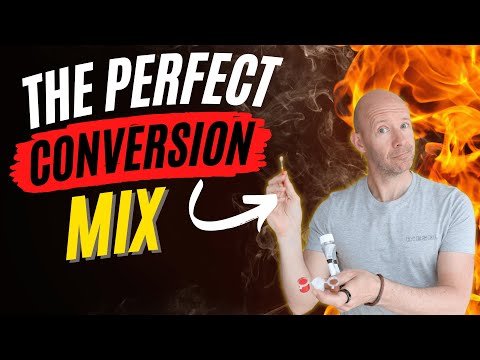How to Optimize Your Website for Conversions, Not Just Clicks

In today’s fast-paced digital landscape, getting visitors to click on your website is just the tip of the iceberg. While clicks are great for initial engagement, the real magic happens when those visitors take meaningful actions, like signing up for a newsletter, making a purchase, or filling out a contact form.
It’s time to shift focus from simply driving traffic to genuinely converting those clicks into loyal customers. This means creating a seamless user experience that guides your audience effortlessly through their journey on your site.
Whether you’re a business owner, a marketer, or a web designer, mastering the art of conversion optimization can lead your website to new heights of success. Let’s delve into strategies that not only attract attention but also transform that interest into tangible results, ensuring your website truly works for you.
Understanding the Difference Between Conversions and Clicks
Clicks represent the initial point of contact between a potential customer and your website. They’re akin to a visitor walking into a store, intrigued by the display in the window. It’s an essential step but, on its own, doesn’t guarantee any tangible outcome.
Conversions, on the other hand, are the actions that visitors take which align with your business goals. This could be anything from purchasing a product, signing up for a webinar, or even sharing one of your articles on social media. Conversions are the very reason your website exists beyond just being a digital billboard.
While a high number of clicks might seem impressive, they don’t always translate to success if visitors aren’t taking that next step. It’s important to measure and optimize for these deeper engagements, as they directly impact your bottom line.
By understanding this difference, you can start to look beyond vanity metrics and focus on what truly matters—persuading visitors to become loyal customers. Prioritizing conversions will ensure your website is more than just a fleeting distraction, but a powerful tool in achieving your business objectives.
Identifying Key Conversion Metrics for Your Website
To truly optimize for conversions, it’s crucial to identify the metrics that reveal the effectiveness of your website’s performance. These metrics will act as guiding stars, helping to chart a course toward achieving your business goals.
Conversion Rate
First and foremost, keep an eye on your conversion rate. This metric shows the percentage of visitors who complete a desired action and is the cornerstone of understanding website success.
Another valuable metric is the bounce rate. This tells you how many visitors leave the site without engaging further. A high bounce rate may indicate that visitors aren’t finding what they expected or that your site isn’t user-friendly.
Time on site gives insight into whether your content is engaging. The longer visitors stay, the more likely they are absorbing information and considering your offerings.
By regularly analyzing these key metrics, you can gain insights into what’s working and what needs improvement. Fine-tuning your website based on this data can lead to a more personalized experience, nudging potential customers toward conversion.

Optimizing Your Website’s Design for Conversions
Great design is not just about aesthetics; it’s about creating an intuitive path for your visitors. A site that guides users seamlessly toward conversion is vital.
User-Friendly Navigation
Start by simplifying navigation. A clear layout helps visitors find what they need quickly, reducing frustration and encouraging deeper exploration. Limit the number of menu items and use descriptive labels to keep things straightforward.
Next, ensure your calls-to-action (CTAs) stand out. These should be strategically placed and clearly visible, encouraging users to take the next step. Use contrasting colors and compelling language to grab attention.
Mobile responsiveness is crucial. With more users accessing websites via mobile devices, your site must maintain its usability across all screen sizes. A responsive design ensures that every visitor, regardless of device, can access your content effortlessly.
Finally, remember that a fast-loading website improves user experience, reducing the chance of visitors leaving before engaging. Use optimized images and streamlined code to boost your site’s speed.
Thoughtful design not only engages visitors but also builds trust. By making the user journey smooth and enjoyable, you’re more likely to convert interest into action.
Utilizing Call-to-Actions to Drive Conversions
Call-to-actions (CTAs) are the linchpins of conversion. They’re not just buttons or links but powerful prompts that guide users to take desired actions.
To craft effective CTAs, use action-oriented language. Words like "discover," "start," or "join" can inspire users to take the plunge. Clarity is essential—let visitors know exactly what will happen when they click.
Placement is key. Position CTAs where they naturally draw attention, such as at the end of a blog post, near significant information, or where the eye naturally travels on a page. Don’t overcrowd the space, though; give CTAs room to breathe.
Testing different variations of your CTAs is vital to understand what drives engagement. Experiment with colors, text, and size to find the most effective combination. A/B testing can provide valuable insights into user preferences.
CTAs serve as conversion catalysts. By designing them carefully, you create clear pathways for users to follow, turning interest into meaningful interactions.
The Bottom Line: Effective Strategies to Enhance Website Conversions
In the ever-evolving digital landscape, optimizing your website for conversions is paramount. While attracting clicks can be a good starting point, the ultimate goal is to convert visitors into loyal customers who engage with your brand.
Remember, understanding the distinction between clicks and conversions is foundational. By focusing on metrics that truly matter, such as conversion rates and bounce rates, you gain valuable insights into your site’s performance. This data is crucial in shaping strategies that effectively increase conversions.
By the same token, crafting a user-focused design is essential. This means creating an inviting and intuitive experience, where navigation is simple, CTAs are compelling, and mobile responsiveness is guaranteed. Every element on your website should work together to guide users smoothly towards their goals.
CTAs play a pivotal role in driving conversions. They are the signposts on your website, directing visitors to take the next step. Craft them with clear, engaging language and place them strategically to capture attention without overwhelming the user.
Ultimately, enhancing website conversions is about understanding your audience and continuously refining your approach. Regularly review your strategies and be open to adapting based on user feedback and data insights. With these efforts, you not only boost conversions but also nurture lasting relationships with your audience, ensuring sustained success.



